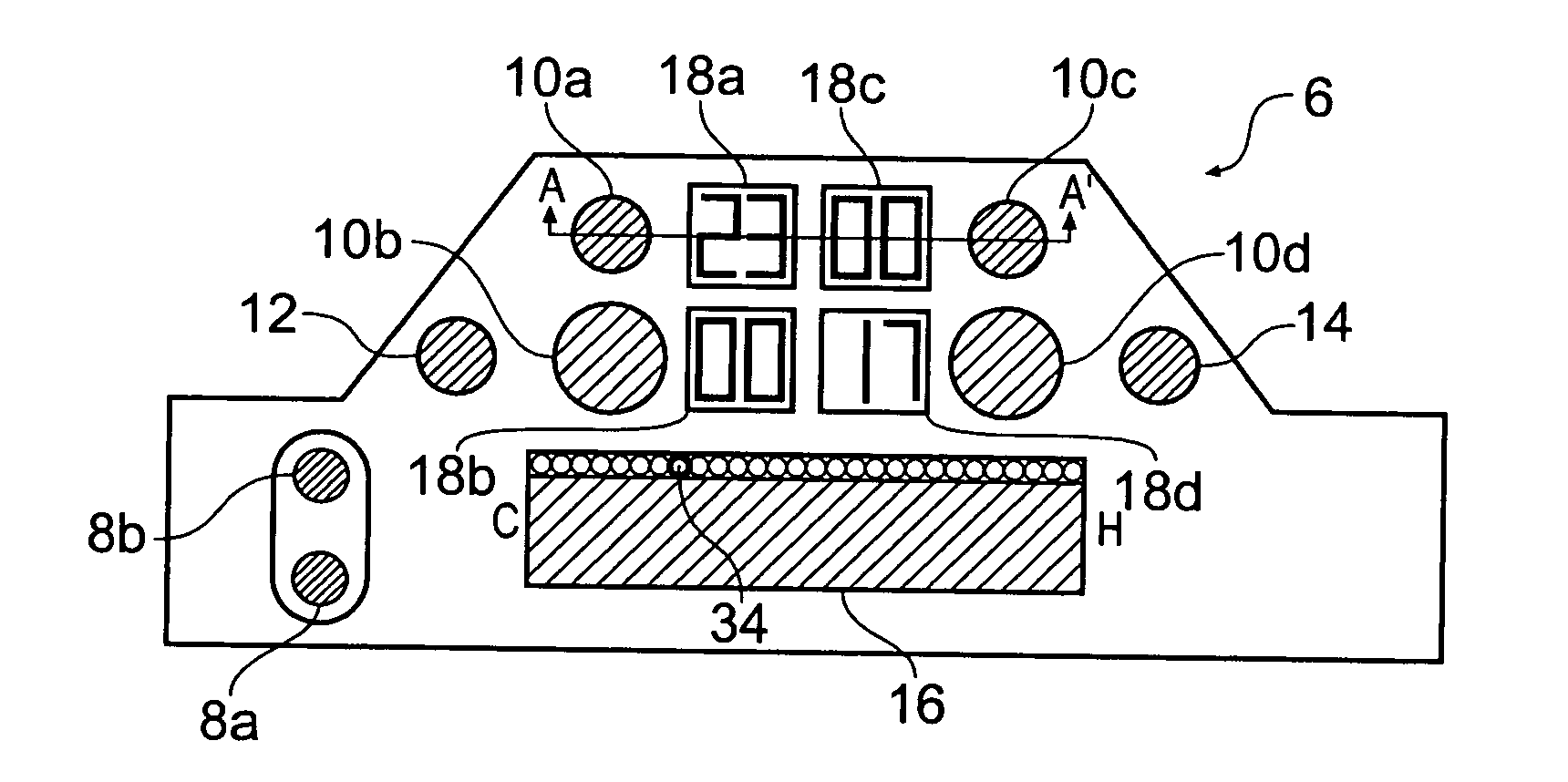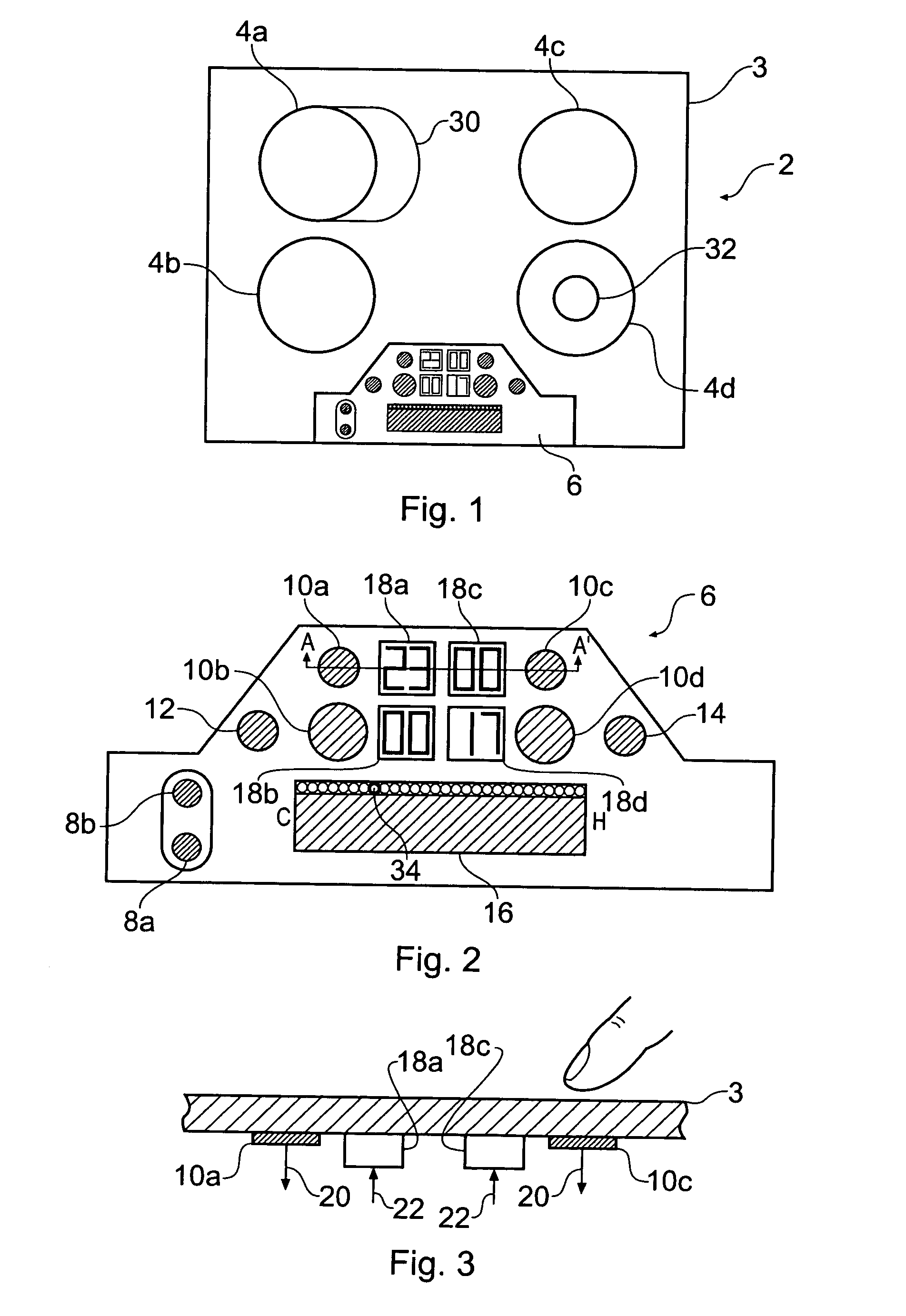Touch sensitive control panel
a control panel and touch technology, applied in the field of touch control panels, can solve the problems of reducing the chance of inadvertent activation, and reducing the chance of accidental activation
- Summary
- Abstract
- Description
- Claims
- Application Information
AI Technical Summary
Benefits of technology
Problems solved by technology
Method used
Image
Examples
Embodiment Construction
FIG. 1 schematically shows a plan view of a domestic appliance according to a first embodiment of the invention. The appliance is a hob 2. The hob 2 has an upper surface which comprises a heat resistant glass top 3. The glass top is continuous over the upper face of the hob. This continuous glass top 3 is easy to clean and does not allow fluid or debris to enter the inside of the hob. Below the glass top are mounted four individually adjustable heating elements 4a-d and a control panel 6. The control panel allows a user to control various functions of the hob, for example switching it on and off and adjusting the temperature of the heating elements. The heating elements 4a-d are of the kind conventionally used with glass-topped hobs.
FIG. 2 schematically shows a plan view of the control panel 6 of the hob 2 shown in FIG. 1 on an expanded scale. The touch-sensitive control panel 6 in this example is a capacitance-based control panel. Although control panels of this type are commonly r...
PUM
 Login to View More
Login to View More Abstract
Description
Claims
Application Information
 Login to View More
Login to View More - R&D
- Intellectual Property
- Life Sciences
- Materials
- Tech Scout
- Unparalleled Data Quality
- Higher Quality Content
- 60% Fewer Hallucinations
Browse by: Latest US Patents, China's latest patents, Technical Efficacy Thesaurus, Application Domain, Technology Topic, Popular Technical Reports.
© 2025 PatSnap. All rights reserved.Legal|Privacy policy|Modern Slavery Act Transparency Statement|Sitemap|About US| Contact US: help@patsnap.com



